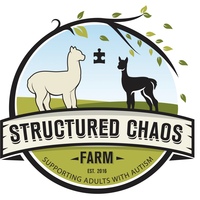The Origin of Alpacas
Alpacas are kept in herds that graze on the level heights of the Andes of Ecuador, southern Peru, northern Bolivia, and northern Chile. Alpacas are considerably smaller than llamas, and unlike llamas, alpacas are not used as beasts of burden but are valued only for their fiber. Alpaca fiber is used for making knitted and woven items, much as sheep's wool is. These items include blankets, sweaters, hats, gloves, scarves, a wide variety of textiles and ponchos in South America, and sweaters, socks, coats and bedding in other parts of the world. The fiber comes in more than 52 natural colors as classified in Peru, 12 as classified in Australia and 16 as classified in the United States. Alpacas and llamas differ in that alpacas have straight ears and llamas have banana-shaped ears. Aside from these differences, llamas are on average 1–2 feet taller and proportionally bigger than alpacas.
Alpacas have been domesticated for thousands of years. In fact, the Moche people of Northern Peru often used Alpaca images in their art. There are no wild alpacas. The closest living species are the wild Vicuña, also native to South America. Along with Camels and Llamas, the Alpaca are classified as camelids. The Alpaca is larger than the Vicuña but smaller than the other camelid species.
Of the various camelid species, the Alpaca and Vicuña are the most valuable fiber-bearing animals: the alpaca because of the quality and quantity of its fiber, and the vicuña because of the softness, fineness and quality of its coat. Alpacas are too small to be used as pack animals. Instead, they were bred exclusively for their fiber and meat.
Alpacas are social herd animals that live in family groups consisting of a territorial alpha male, females and their young. They are gentle, elegant, inquisitive, intelligent and observant. As they are a prey animal, they are cautious and nervous if they feel threatened. They like having their own space and may not like an unfamiliar alpaca or human getting close, especially from behind. They warn the herd about intruders by making sharp, noisy inhalations that sound like a high pitch burro bray. The herd may attack smaller predators with their front feet, and can spit and kick. Due to the soft pads on their feet, the impact of a kick is not as dangerous as that of a hoofed animal, yet it still can give quite a bruise, and the pointed nails can inflict cuts.
In the United State and Canada alpaca herds range in size from just a few alpacas all the way up to a few thousand.
January 12, 2019
